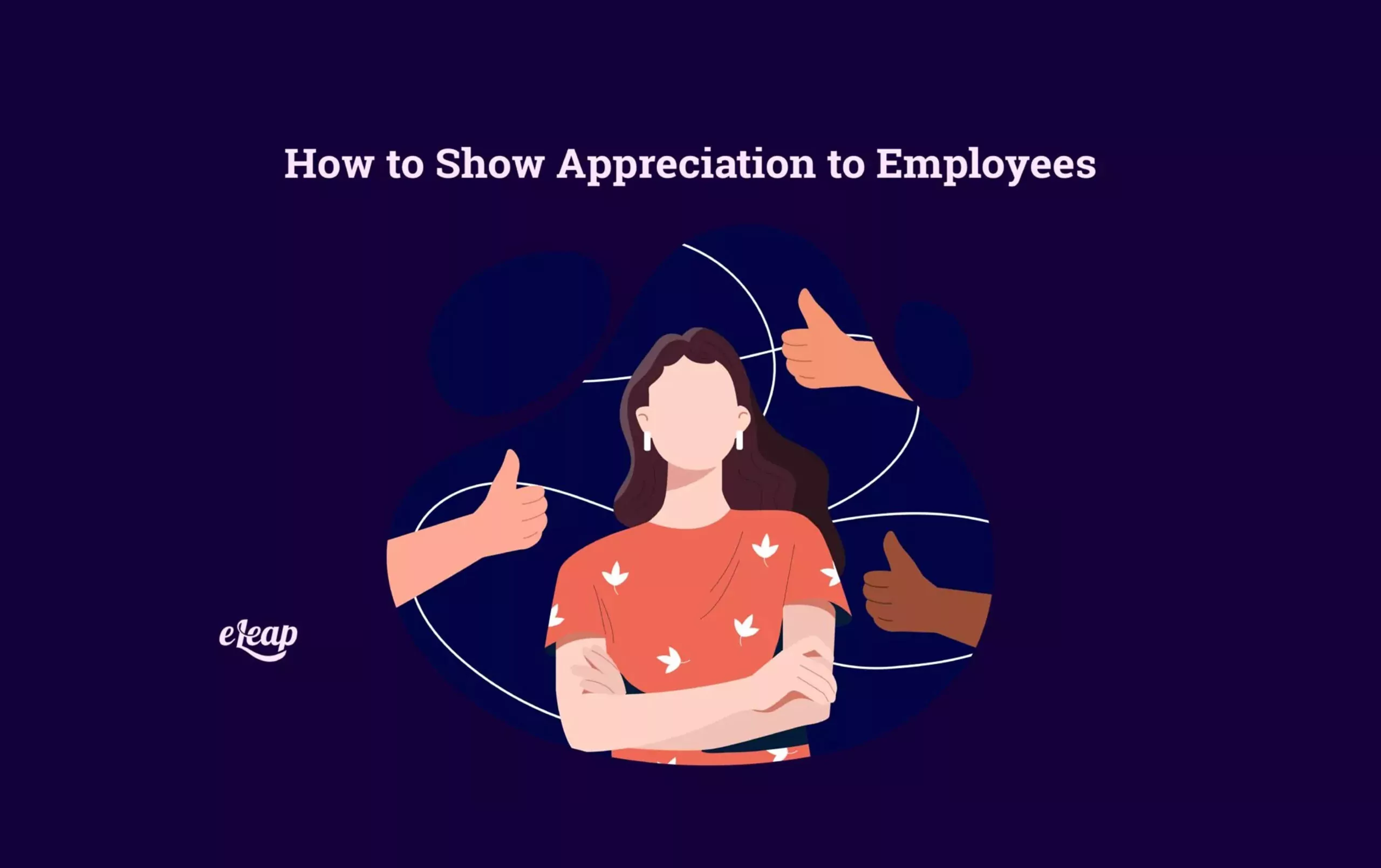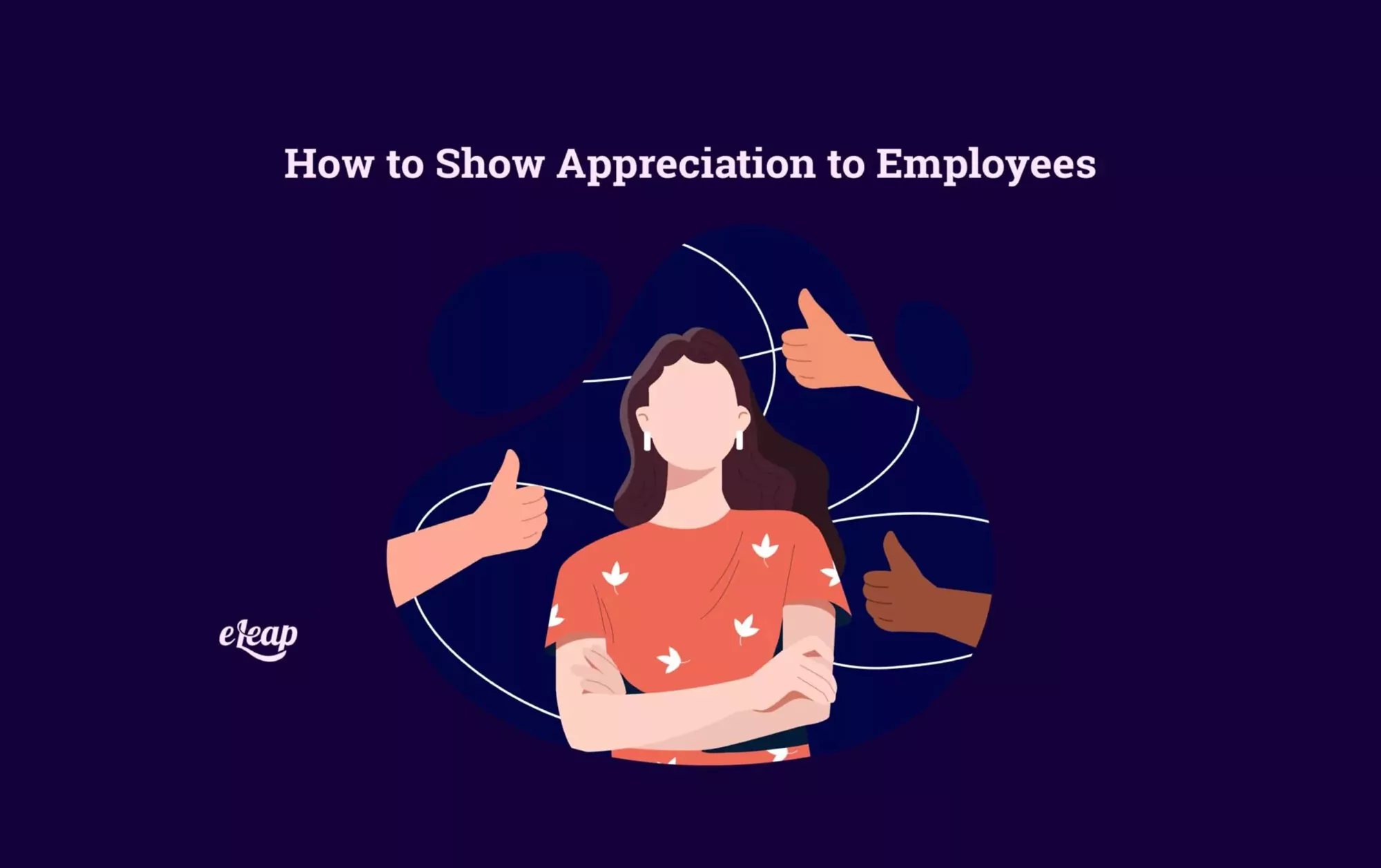How to Show Appreciation to Employees

It’s vital that companies find meaningful ways to show appreciation to employees. Studies show that 82% of Americans feel underappreciated at work. However, more than half say they would feel a better sense of pride in their work and improved well-being if they received more appreciation.
While we might not get recognition for a job well done in our personal lives, most people expect some form of appreciation in the workplace. Companies that make a genuine effort to show appreciation to employees gain measurable benefits. Organizations that fail to do so inevitably see negative consequences.
This article is all about explaining the benefits of showing appreciation to employees. We outline some best practices for creating recognition programs and offer examples of ways companies can recognize workers for a job well done.
Defining Appreciation
Appreciation is the recognition of an employee, team, or staff. Companies often show appreciation when employees perform above and beyond the norm. However, daily appreciation is important as well.

Most of us can remember a time when we felt appreciated at work. Sometimes, appreciation is a simple handshake and congratulations. Maybe we won an award or received a gift for hitting a work anniversary.
Unfortunately, many also recall a time when we felt underappreciated, or even worse, unnoticed. Working hard on a project and failing to get even a head nod from our boss is a terrible feeling. It often leads to people feeling unmotivated and less likely to put in the same effort in the future.
The Importance of Appreciation
A paycheck is a primary reason people show up to work every day. However, people expect appreciation for hard work and long hours to go farther than just the agreed-upon price of labor. A simple thank you from a manager makes a significant difference in attitude and motivation.
Showing appreciation for employees is one of the most important things organizations do to incentivize employees. Employees who feel genuinely appreciated and receive recognition for their successes reward their organizations with a long list of benefits, such as the following ideas.
Improved Retention and Lower Turnover
Feeling underappreciated is the number one reason people leave their jobs. An estimated 79% of people who leave a job report a lack of appreciation as the reason for their departure.
Employees who feel their employers do not appreciate their successes are more likely to leave a company. Studies show that companies that have a record of providing recognition for staff have a turnover rate 31% lower than companies that don’t.
More Engaged Employees
Employee engagement is an important quality that companies must work to cultivate. Appreciation programs increase the rate of employee engagement by 71%. Meanwhile, disengaged employees cost the U.S. economy between $450−500 billion annually.
Improved Performance
Most companies that perform well in areas of customer appreciation—60% of them—report that recognition improves individual performance. There is no denying that motivated and engaged employees are:
- More productive
- More satisfied
- Less likely to miss work
- More likely to recommend their employer to others
- Less likely to make mistakes
- Have an increased well-being
Improved Customer Satisfaction Scores
Employees who are appreciated are more likely to be upbeat in the workplace. They have a positive attitude and drive to help the company succeed. This type of motivation bleeds over into the customer experience.
Studies show that customers who report positive experiences with staff members are 41% more likely to remain loyal to a company.
Tips for Showing Appreciation to Employees
While appreciation and recognition are extremely important for company success, leadership must execute them correctly. Poorly designed appreciation programs backfire. Appreciation that seems ingenuine creates negative consequences instead of positive benefits.
Below are some tips you can use to ensure appreciation shown to employees gets the right results.
Use the Right Method
People have different comfort levels and preferences. While one employee may thrive on receiving public recognition, another may shy away from the spotlight and prefer a private conversation.
Leaders have a responsibility to get to know the preferences of their employees. Take the time to learn the best way to motivate each individual, and use the knowledge gained to create opportunities for appreciation that match their personality.
Show Genuine Gratitude
Employees know when appreciation is disingenuous. Pay attention to facial expressions, body language, and eye contact when offering appreciation. Give the employee your undivided attention.
Listen and Learn
Actively listening to employees is often the best way to show appreciation. Everyone wants to feel heard, so give your team members the chance to speak openly. Then follow up with action in response to their ideas or concerns.
Personalize Appreciation To Employees
Personalization lets employees know you recognize their achievements instead of just throwing empty thanks at them. When providing appreciation, let employees know which specific actions led to the recognition.
Include the Team
The best way to learn what kind of appreciation employees appreciate the most is to ask them! Instead of assuming you know what is best, ask for their input and advice. You might be surprised by what they have to say.
Everyday Thanks
Appreciation should match the occasion. Every appreciation program benefits from events and special occasions. However, do not overlook daily opportunities to show gratitude, even in small ways.
Examples of Recognition
Daily recognition − One of the best things a boss can do to motivate employees is to say thank you daily. Employees deserve gratitude and appreciation for showing up and working hard every day.
Verbal recognition − A simple “thank you” or “nice work” can go a long way in the workplace. Sometimes all it takes is letting employees know that you recognize their efforts and appreciate their hard work.
Public praise – Being acknowledged in front of coworkers is a great feeling. Plus, it drives friendly competition that increases performance and gets better results.
Coworker engagement – While recognition from superiors and managers is vital, receiving that same appreciation from coworkers is often more motivating and meaningful.
Thank you notes – A hand-written note shows employees that you took the time to personally recognize them, despite having a full plate of responsibilities. Taking the time out of your day to pen a simple note of gratitude is a great way to make employees feel recognized.
Emails – Email is a quick and efficient way to recognize achievements. There are several ways to make this kind of recognition stand out:
- A personal email sent to an employee
- Callouts included in a group email
- Forwarding an appreciation email to higher-ups
Certificates – Certificates of achievement are a wonderful way to recognize performance or mark anniversaries. Framing them for easy hanging makes this a form of recognition that persists over the years.
Trophies – Use a circulating trophy awarded to top performers. Use this method to stimulate competition. Another idea is to allow employees to nominate each other for specific actions that went above and beyond.
Rewards and incentives – To show extra appreciation for a stellar performance, include a gift card for coffee or a meal. A gift basket is also a great way to personalize rewards.
Catalog gifts – Instead of offering the standard gift card, which may seem impersonal, many companies allow employees to choose their reward. Tiered catalog rewards provide extra motivation to stay with an organization so they can gain access to higher-level rewards.
Deliver food, snacks, and surprise treats – Everyone loves a free lunch! Drop off doughnuts and coffee, spring for lunch, or schedule a food truck to stop by the office.
Social media – Social media provides a new and unique way to recognize accomplishments. It allows for reach to other employees, public followers, and customers.
Appreciation events – Host an Employee Appreciation Day, or even better, an entire week. Appreciation events allow for many creative opportunities to reward employees for their time and effort.
Offer activities that benefit health and wellness – Offer employees discounts for gym memberships or free yoga classes. This form of appreciation shows employees that you value their well-being.
Do something fun – While offering opportunities for “fun” may sound vague, it creates lasting memories for staff members. Showing employees that you genuinely want them to enjoy working for your company is a sure-fire way to help them feel appreciated.
Commemorate work anniversaries – Hitting a milestone deserves recognition. A commemorative plaque, gift, or a personal visit from leadership helps employees feel like their years of service are valued.
Perks at work – Provide employees with a paid half-day, or even an entire day, off from work.
Put yourself to work – How about spending the afternoon working for your employees? If there is a menial task or two that team members often grumble about, offer your services as a reward for a job well done.
Mark holidays and birthdays – Don’t forget to provide appreciation and gratitude on the most important days of the year. Holiday bonuses are a tried-and-true way to show appreciation, and everyone deserves some birthday recognition.
Company swag – Apparel, water bottles, keychains, and more, are common offerings that employees love to receive. Company swag provides employees the chance to show pride in their organization.
Conclusion
There are so many ways that an organization shows appreciation for employees. The key to success is communication with your team. This allows you to understand what kind of recognition they appreciate the most.
It is easy for managers and bosses to get wrapped up in the day-to-day operations of a company. However, remember that a company relies on the performance of its employees. So, any time spent showing appreciation and providing recognition to team members is well spent.